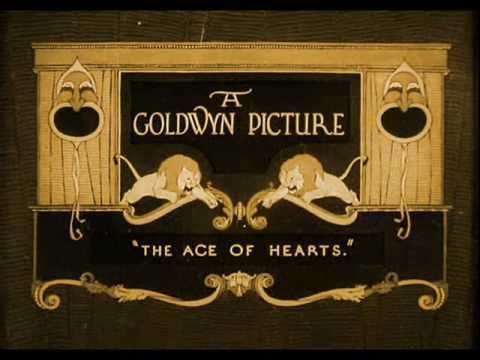Products movies | Founded 20 April 1916 Ceased operations April 16, 1924 | |
 | ||
Defunct April 16, 1924; 92 years ago (1924-04-16) Films produced | ||
Goldwyn Pictures Corporation was an American motion picture production company that operated from 1916 to 1924 when it was merged with two other production companies to form the major studio, Metro-Goldwyn-Mayer.
Contents
The studio proved moderately successful, but became most famous due to its iconic Leo the Lion trademark. Although Metro was the nominal survivor, the merged studio inherited Goldwyn's old facility in Culver City, California where it would remain until 1986. The merged studio also retained Goldwyn's Leo the Lion logo.
Lee Shubert of Shubert Theater was an investor in the company.
History
Goldwyn Pictures Corporation (GPC) was founded on Nov 19 1916 by Samuel Goldfish partnering with Broadway producers Edgar and Archibald Selwyn using an amalgamation of both last names to create the name. Goldfish had left Lasky's Feature Play Company, of which he was a co-founder, in 1916 when Feature Play merged with Famous Players. Margaret Mayo, Edgar's wife & play writer, and Arthur Hopkins, a Broadway producer, joined the trio as writer and director general.
At the beginning, Goldwyn Pictures rented production facilities from Solax Studios when it and many other early film studios in America's first motion picture industry were based in Fort Lee, New Jersey. The company's first release was Polly of the Circus, an adaptation of Mayo's play, in September 1917 starting Mae Marsh. By April 1917, Goldwyn Pictures agreed to rent the Universal Pictures studios in Fort Lee, then having the second largest stage, and had two film companies operating at the time with plans for more production companies. The company management planned on having 12 films done by September 1, 1917 with out distributing the films so as to be able to show advanced footage to the theaters. Goldfish also associated the company with Columbia University via Professor Victor Freeburg's Photoplay Writing class in 1917 to increase the company's artistic standings. The company also released other production companies films with Marie Dressler's Dressler Producing Corporation film, The Scrub Lady, in 1917. The company was forced in October 1917 to switch out The Eternal Magalene for Fighting Odds, both starring Maxine Elliott, after the National Board of Review cleared the Magalene movie while censors in Pennsylvania state and Chicago city did not approve the film. Thais starring Mary Garden was released in late 1917 which was a costly loss.
In January 1918, Goldfish signed director Raoul Walsh and prematurely announced it as there were two years left on Walsh's contract with Fox. With Thais being the company's second costly loss, Goldwyn decreased film budgets partly by not using theater divas to cross over to film and reducing design driven films. Instead, he rely on comedies starring Madge Kennedy and Mabel Normand. In August 1918, GPC signed Will Rogers, at that time a Broadway Follies favorite, to star in a Rex Beach production, Laughing Bill Hyde, filmed at the Fort Lee studio for release in September. The company purchased the Triangle Studios in Culver City in 1918. Goldwyn then headed west out to Culver City in the Winter of 1918 which opening operations there also caused an increase in film expenses. Seeing an opportunity in December, Samuel Goldfish then had his name legally changed to Samuel Goldwyn.
In 1919, Frank Joseph "Joe" Godsol became an investor in Goldwyn Pictures.
Goldwyn began looking at follow other film companies, like Loews Theaters/Metro Pictures and First National, into vertical integration. Goldwyn and the company backers were looking at renting the Astor Theatre for movie premiers instead with the Capitol Theatre's financial problems in May 1920, the backer purchased a controlling interest in that theater. Shubert and Godsol, however, did not want the theater to rely only on Goldwyn films and operated it separately from the company.
By 1920 in addition owning its Culver City studio, GPC was renting two New York studios and nearly ceased operations in Fort Lee.
After personality clashes, Sam Goldwyn left the company in 1922. Lee Shubert of Shubert Theater contacted Marcus Loew about merging the company with Loew's Metro. Loew agreed to the merger. Louis B. Mayer heard about the pending merger and contacted Loew about adding his Louis B. Mayer Productions into the post merger company, Metro-Goldwyn-Mayer.
Feature staff
Next One - Now In 1924–Present
Metro-Goldwyn-Mayer
Filmography
A 1967 fire in an MGM storage facility destroyed many negatives and prints, including the best-quality copies of every Goldwyn picture produced prior to 1924; over half of MGM's feature films from before 1930 are completely lost. On March 25, 1986, Ted Turner and his Turner Broadcasting System purchased pre-May 1986 MGM films (including Goldwyn Pictures films) from Kirk Kerkorian for $600 million.
